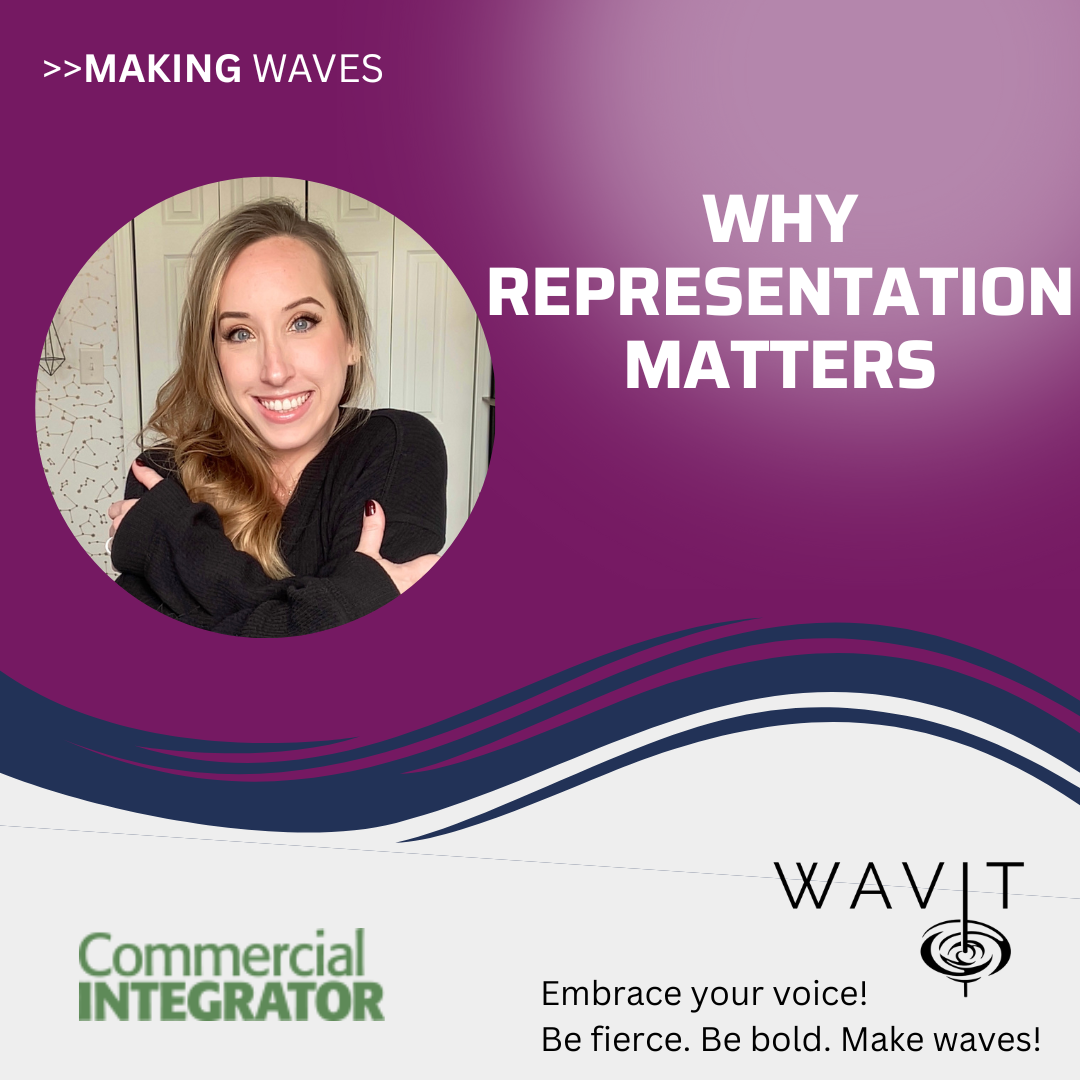Commercial Integrator Making Waves: Why Representation Matters
 Commercial Integrator Making Waves: Why Representation Matters
Commercial Integrator Making Waves: Why Representation Matters
IDEALLY, IF WE SEEK to initiate change, we can’t cement ourselves into a self-made echo chamber of our own opinions and thoughts. To make change, it becomes necessary to have seemingly uncomfortable conversations, involving challenging topics, with friends and colleagues who have opposing opinions and viewpoints. That allows us to have a well-rounded perspective on a given problem. We can’t know our roadblocks or what is standing in our way without opening up the conversation to those who do not necessarily support our initiatives.
An Opposing Perspective
Recently, I have noticed the repetition of a common opposing perspective on the topic of the gender gap in pro AV and IT. According to this view, the gap exists because, quite simply, girls are inherently less interested in technology and STEM subjects. Thus, naturally, fewer of them are in this field. Others make the related argument that women’s groups and female-focused STEM-outreach programs just interfere with the natural selection of individuals who choose a certain career path. Those who make this argument are often critical of what they perceive as intervention efforts that overly push girls toward STEM programming.
However, I would put forward another hypothesis, which needs to be acknowledged and tested: Another possible reason, other than a lack of interest, that there aren’t as many girls in STEM fields is because they either (a) do not see the representation required to make them feel like they can succeed in a STEM field or (b) feel as if they do not belong, don’t have the resources they need or are not supported when they begin a journey into STEM education or a STEM career. In other words, women and girls might feel that their male colleagues have an easier time networking and relating to each other than they do.
We can face these roadblocks of under-representation and inaccessibility of STEM programming for girls in AV and IT by working together to solve this common problem. Incidentally, solving problems is exactly what the pro AV/ IT industry is centered on, and it’s a necessity in STEM education. To create a more equitable world and industry, we are, in essence, working together to solve a complex problem. The world is an eclectic place, boasting many viewpoints and perspectives. And the most successful organizations and systems in our world embrace diversity and equity. They solve problems faster and more efficiently because of the priceless benefits of multiple inputs and divergent perspectives.
As Many Perspectives as Possible
Although AV and IT were not previously strongly considered as possible STEM careers, I think the pandemic showed us the importance of well-deployed and useful AV and IT systems. If we want the pro AV/IT industry to live up to its fullest potential, we need as many perspectives as possible serving on boards and working in decision-making roles. This will also create the representation required to attract diversity to our industry ranks.
Here’s a simple truth: If everyone around you thinks the same way that you do, it means that all those people will likely produce similar (or the same) solutions and answers to problems. Unfortunately, those solutions and answers might fail or be suboptimal. Choosing not to seek new perspectives or refusing to have discussions with those who don’t share your viewpoint is like Einstein’s belief that the definition of insanity is doing the same thing over and over but expecting different results. You cannot surround yourself with the same people, who share the same thought patterns, and expect different results when seeking to tackle challenging problems. What’s more, an industry filled with the same type of person will ultimately be unsuccessful in attracting diverse talent.
Let’s stick with the topic of not repeating the same tactics and expecting different results. Analyzing the statistics and data of the last decade tells us that we have not realized the desired results to close the gender and diversity gaps.
Unfortunately, we took a step back during the pandemic; it found women leaving the workforce. Recent data shows that there are very few women in AV and IT under the age of 40. These results reflect that the past strategies to foster female representation in AV and IT, so as to attract the next generation of girls to our industry, are not necessarily working to their full potential. So, we have to try something else until we start to see the results that we all want.
Positive Changes to Celebrate
This isn’t to say that there haven’t been great changes to celebrate. And I don’t want to diminish the positive changes that we have all experienced. After all, in 2021, more women than men received AV awards by AVIXA at InfoComm. And women’s councils have grown exponentially over the last decade.
Plus, the AV industry showed up to support STEM programming for girls by supporting the Rosie Riveters non-profit. Finally, we have seen from International Women’s Day the incredible ways that companies within our industry work to support their female employees and strive to embrace diversity.
However, all that being said, we want to make a point: It’s important to keep the momentum going until we can stop and say we are proud of our results. In this regard, WAVIT welcomes our colleagues of every gender, age and unique perspective to help us work together to solve the shared problem that is the gender gap and lack of diversity within the pro AV/IT industries.
By providing access to various STEM-outreach programs, we can bring about equal.

